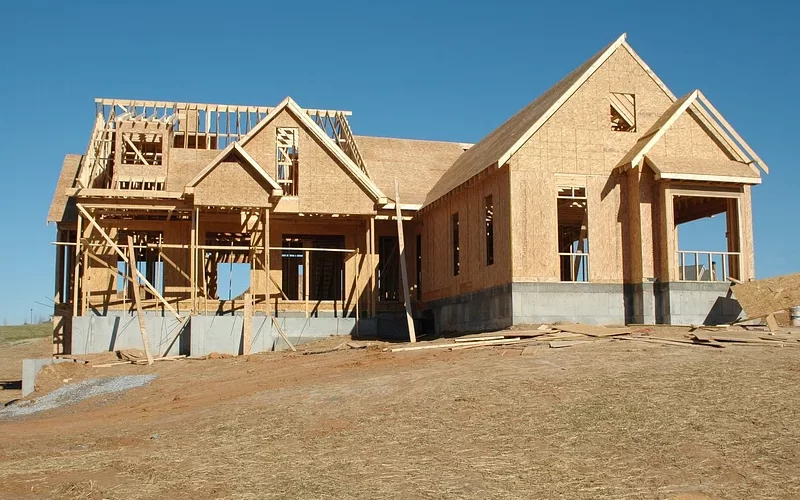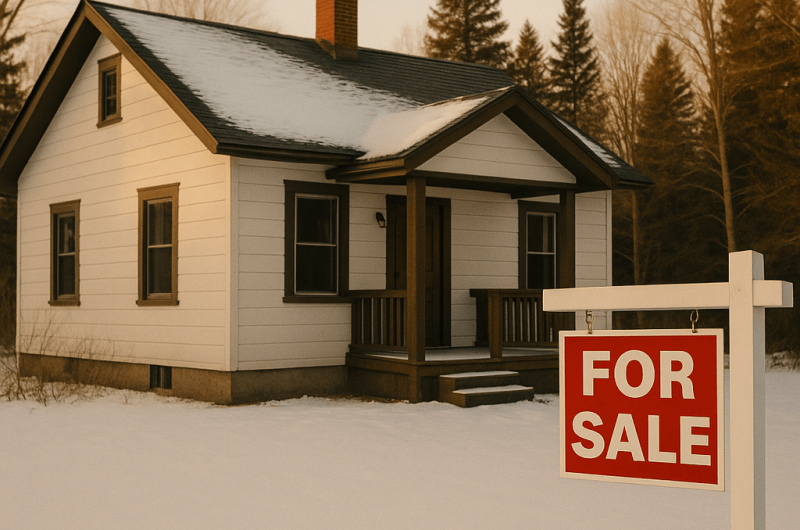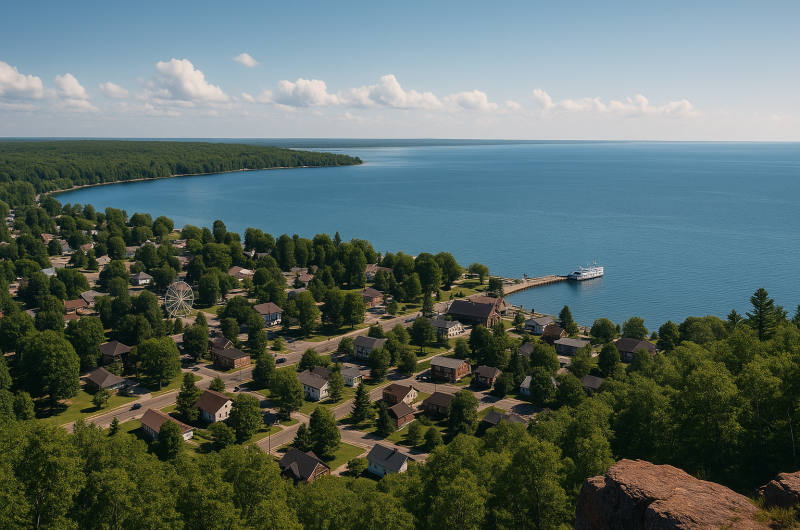The Challenge of New Home Construction in Marquette County

Housing availability and affordability are nationwide issues, with the cost of new and existing homes rising out of reach for many Americans. States and municipalities have responded to these twin challenges by developing policies designed to increase new home construction.
In Michigan, Governor Whitmer introduced the state’s first housing plan in 2022 with a target of 75,000 new or rehabilitated housing units to be created by 2027. In the Upper Peninsula, the city of Marquette hopes to promote more new home construction by modifying its zoning and building codes, and has recently approved several housing developments including new northside lakeshore condominiums and a south Marquette neighborhood.
There are also plans for redeveloping the site of the former Marquette General Hospital with owner-occupied townhomes, multi-family housing, apartment units, and a senior living complex. In addition, the city and adjacent township have agreed to share tax revenue from the proposed Forestville housing development that lies adjacent to the Noquemanon Trail Network.
This article briefly considers the reasons behind the lack of affordable housing and the impact of these new developments on the broader Marquette County housing market using newly available data from the Federal Reserve Bank of St. Louis.
Housing Availability and Affordability
According to Freddie Mac, a mortgage provider, the US was short 3.8 million housing units in 2020. The principal factor behind the housing shortfall has been the long-term decline in constructing single-family homes, falling to its lowest levels in 60 years during the 2010s.
That decline has been exacerbated by an even larger decrease in the supply of entry-level single-family homes, a.k.a. starter homes. The share of entry-level homes in overall construction declined from 40% in the early 1980s to around 7% in 2019. The drop in new home construction has been attributed to a lack of available construction labor, land use regulations, zoning restrictions, NIMBYism (not in my back yard), and a lack of land developers.
Marquette County’s housing market mirrors these national housing trends. In simple terms, the market determines how much a home is worth, if there are more homes than buyers, then buyers get a good deal. Alternatively, if there are few homes on the market and the demand is the same, the seller will reap the benefits.
In Marquette County, the monthly average of homes listed for sale on Realtor.com in 2017 was 443; in 2022 the equivalent figure was 82, while the figure for the first four months of 2023 is 53. The real estate market is seasonal, with the largest number of new listings typically peaking in early spring. In May 2017 there were 146 new listings, while the equivalent figure was 88 in 2022. With fewer homes for sale, it is not surprising that the median listed home price went from $161,000 in 2017 to $239,990 in 2022, a 49 percent increase. The median figure for the first four months of 2023 is $282,862.
In a situation where there is a short supply of a particular commodity or good, it might be expected that the market would respond by increasing the supply and thereby bring down its cost. But, as the demand and cost of housing has risen, the number of new housing permits granted has fallen. From 2017 to 2022 a total of 560 new housing permits were approved in Marquette County; in a similar 5-year period between 1997 and 2002 a total of 1,547 permits were issued.
So, what explains why the supply of new housing has failed to keep up with the demand? A short answer is the cost of a new home. According to a local Marquette home builder, in 2021 the average cost for a new single-family home in the area was $400,000 without land costs. This figure was attributed to the need for at least 15 subcontractors and the rising cost of materials, land and labor; expenditures which are outside the control of builders or municipalities. Two years later it is safe to say that a new home’s cost is even higher.
Townhomes or duplexes are cheaper to construct than single family homes as they require less lumber and fewer windows since the adjoining units share a common wall. Street frontage costs that include water and sewer lines and other utilities are also much lower for townhouse developments as they are closer together than for a single-family home.
Finally, it takes less time to build a townhome than a single-family home, meaning labor costs are lower. However, a new home’s final purchase price reflects other considerations, most notably, the price of land. A two-bedroom condominium in the lakeside Gaines Rock development, for example, is currently for sale at $589,900, putting it out of the price range of most Marquette working families. Indeed, like many of the city’s recent lakefront developments, it is targeted at retirees and empty-nesters.
Despite townhouses’ cost advantages, the developer of Marquette’s Hemlock Park, an approved new neighborhood of 60-70 townhomes and bungalows in south Marquette, successfully lobbied for $2 million from the city to pay for the construction of the development’s streets, lighting, sidewalks, water and sewer lines. Without such an investment it was argued that those costs would have to be added to a home’s purchase price, making the units more expensive and less likely to fulfill the city’s goal of building and retaining Marquette’s workforce. With the development in the early stages of construction, it is too early to determine whether the new homes’ final sale price will meet the city’s goal.
The demand for housing is unlikely to drop despite recent increases in mortgage rates, as many people are spending more time at home due to the increase in remote working. Moreover, the largest demographic group in the US, Millennials, are at their peak first-time home buying age.
Yet without a commitment of public funds to offset infrastructure costs, it seems likely that any new homes constructed in the area will remain outside the price range of many local residents.







What about a development for manufactured homes, which are less expensive and more affordable for first-time homebuyers or people who want to downsize. A good example are the homes on the Bluff in Gladstone but they don’t need to be built around a golf course.
We are still seeing Marquette businesses needing employees. It’s good new businesses are being built in Mqt Twp but I wonder if these new businesses will have trouble hiring employees. Without affordable housing for Mqt residents, who can move here to work here? If the new businesses pay more and employees already working a job, quit that job to work at a new business, the same problem will still exist. What is the answer?
Continued growth is a threat to the Great Lakes, the environment (particularly water quality) and to tribal treaty rights. We’ve already seen the first algae blooms in Lake Superior. We need stricter growth, zoning and water quality standards.
The Treaty with the Odawa in 1836 says that we retain the right to hunt on ceded lands “The Indians stipulate for the right of hunting on the lands ceded, with the other usual privileges of occupancy, until the land is required for settlement.” Continued growth in the UP is a threat to tribal sovereignty and relations with Michigan tribes.
Exponential growth is not sustainable – for our community or the world. I have yet to see someone address the irony of a stagnant population and a housing shortage. There is not a massive influx of year round residents or our population would be expanding. I would love an exploration of other factors causing the shortage – which has been ignored in the articles I have read. A couple decades ago, there was a local forum on “smart” development: environment, walkability, community etc were factored into sustainable development. Haven’t seen it happen. At that time, it was predicted about 80% of new homes in the county would be 2nd homes. I suspect that trend, over 2 decades, is a significant factor. I can guess at other factors – but how would love a true analysis.
Excellent idea. I have the same questions.